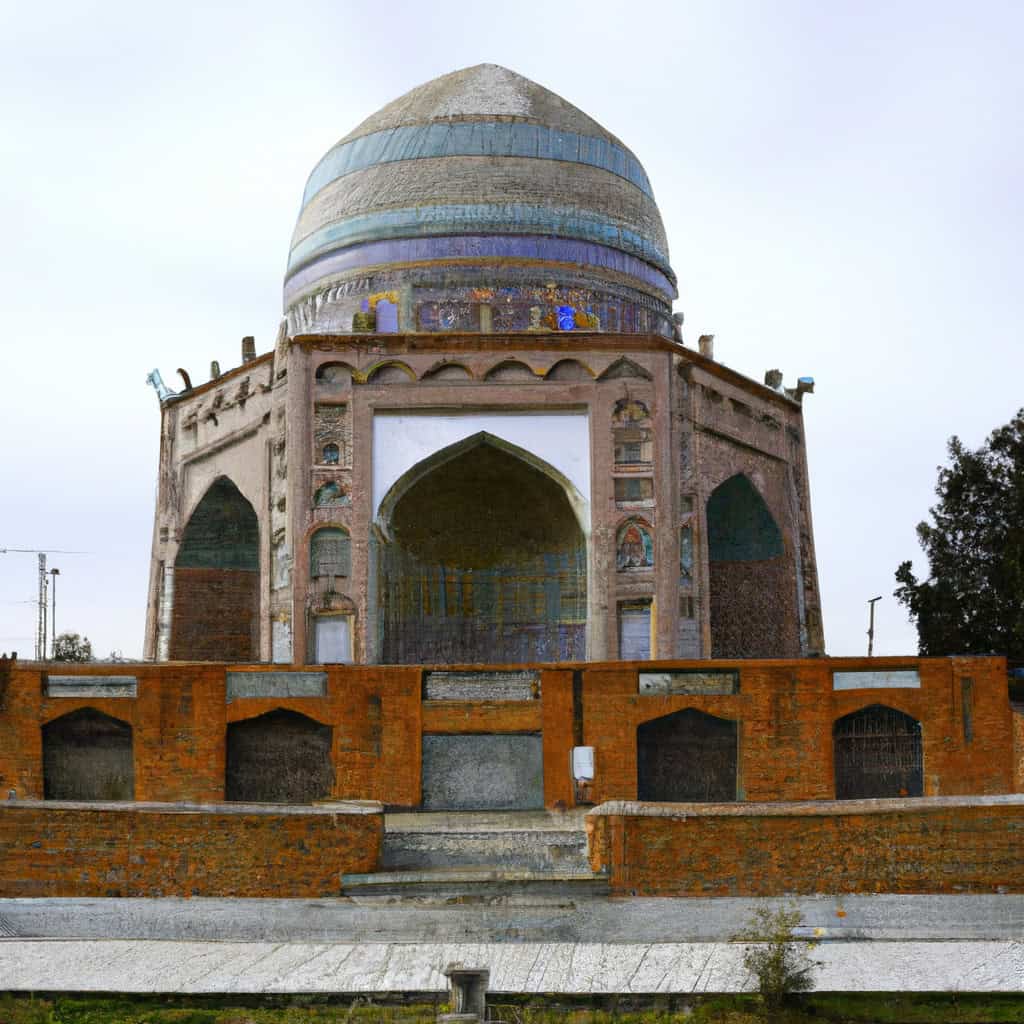Mausoleum of Amanullah Khan in Jalalabad, is one of many fascinating sites that both foreign visitors and local tourists can explore while they visit Afghanistan and exploring Nangarhar Province. A place of both architectural magnificence and historical significance, the mausoleum stands as a testament to the grandeur of Afghanistan’s past. Marrying history and culture in its walls, the Mausoleum of Amanullah Khan is more than just a resting place for the late great king; it’s a symbol of the resilience and determination of the Afghan people. Its historical relevance and cultural significance make for compelling exploration.
Mausoleum of Amanullah Khan Most Important Events
- The Defending of Afghanistan: Among the most impactful historical moments at the Mausoleum of Amanullah Khan is the time when King Amanullah Khan defended Afghanistan against British control in the Third Anglo-Afghan War in 1919. His victory led to Afghanistan’s full sovereignty.
- The Social Reforms of Amanullah: Equally impactful was the implementation of social reforms by Amanullah Khan, who advanced Afghanistan into a more modern society. He viewed the mausoleum as a symbol of progress and change.
- The Unveiling of the Mausoleum: A key moment in its history was the unveiling of the mausoleum, which signified the long-standing legacy of King Amanullah Khan. His in-depth involvement in designing the mausoleum added to its artistic brilliance.
History of Mausoleum of Amanullah Khan in Jalalabad
The Mausoleum of Amanullah Khan is steeped in history, its walls echoing tales of a bygone era. Amanullah Khan, the progressive ruler and King of Afghanistan from 1919 to 1929, built the mausoleum in the late 1920s. The objective was not merely to create a resting place, but to craft a symbol that would represent the resiliency of the Afghan people.
Post his emancipation from the British rule in the Third Anglo-Afghan War, Amanullah established Afghanistan as a sovereign and independent country. With this newfound autonomy, he began implementing widespread socio-economic reforms, which are reflected in the architecture and design elements of the mausoleum.
In 1940, the mausoleum got a new addition, when Abdul Khaliq Gajnavi, an intellectual figure close to Amanullah Khan, was buried there. This added a new dimension to the importance of the mausoleum, making it not only a monument for the royal family but also a final resting place for Afghan luminaries.
Why It’s Important to Afghan History
The Mausoleum of Amanullah Khan is a critical piece of Afghan history. Not only because it represents the resting place of one of Afghanistan’s most significant kings, but because it stands as a symbol of the nation’s independence, resilience, and desire for progress.
Moreover, King Amanullah Khan is remembered as a reformist monarch who brought about radical changes in Afghanistan, and his mausoleum is a testament to those revolutionary transformations. It casts light on a time when Afghanistan was going through massive political and social change, emphasizing the crucial role the iconic mausoleum plays in Afghan history.
Why to Visit Mausoleum of Amanullah Khan
The Mausoleum of Amanullah Khan is as much an architectural marvel as it is a significant historical site. Its design exudes a unique blend of Eastern and Western architectural influences. Simultaneously, visitors are captivated by the picturesque landscape that perfectly complements the monument’s beauty.
Furthermore, the serenity surrounding the mausoleum adds to its charm, making it a perfect spot for contemplation. The view of the Hindukush mountains from the mausoleum adds an unforgettable aesthetic experience for visitors.
Top highlights of visiting the Mausoleum of Amanullah Khan:
- Witnessing the final resting place of Afghanistan’s reformist king
- Exploring the unique architecture
- Experiencing the serenity and tranquility
- Enjoying the stunning view of the Hindukush mountains
- Learning about Afghanistan’s history and culture
The mausoleum is located in the city of Jalalabad in the Nangarhar Province, eastern Afghanistan. It’s easily accessible from Jalalabad and is best to visit during the early morning or late afternoon when the sun’s rays paint the mausoleum in a golden light.
Cultural & Tourist Significance
As a cultural landmark, the Mausoleum of Amanullah Khan stands as a beacon of Afghan pride and a symbol of their national heritage. The unique architecture of the mausoleum, blending eastern and western styles, perfectly showcases the cultural amalgamation that has shaped Afghanistan’s identity.
From a tourism perspective, it’s a site that gives visitors a glimpse into Afghanistan’s rich history and culture. Tourists not only gain knowledge about the country’s past but also experience the aesthetic elegance of Afghan architecture.
Moreover, the mausoleum is an integral part of the Afghan narrative. With its reflection of the nation’s significant events and personalities, it serves as an intriguing chronological tale that captures the essence of Afghanistan’s past, making it invaluable from both a cultural and tourist perspective.
Interesting Facts
An interesting fact about the Mausoleum of Amanullah Khan is that the King himself was a significant contributor to its design. It symbolizes his vision for an independent, modern Afghanistan.
Another lesser-known fact is that the mausoleum houses the tomb of Abdul Khaliq Gajnavi, a celebrated poet, linguist, and close associate of King Amanullah Khan. This gives the monument an additional layer of cultural and historical significance.
Finally, the site also carries a myth. It is believed that late in the night, one can hear echoes of past battles and celebrations. Though never scientifically proven, it adds a mystical charm to this grand monument.
Absolute treasures like the Mausoleum of Amanullah Khan bring history to life. Its stories and architecture capture the heart of every visitor, making it an essential part of any journey into Afghanistan’s past. For history buffs, art lovers, and anyone eager to learn, it stands as an intriguing testament to the nation’s resilience and legacy.


